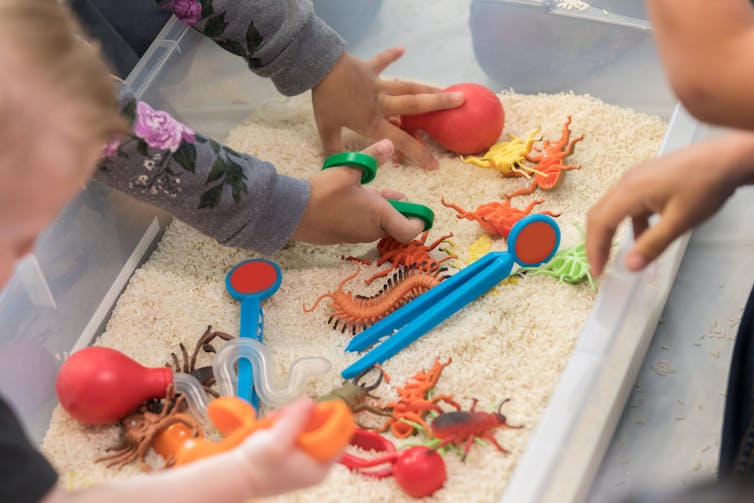
Navigating a maze of therapies and supports can be difficult for parents of autistic children.
Often, children have multiple learning needs, and attempting to address them one-by-one can take more hours than there are in a week. Attending lots of appointments – while well meaning – may leave little, or no, time for play.
This is why the new National Guideline that outlines how practitioners should work with autistic children and their families is important.
Along with vital information on goal setting, selecting therapies, and measuring outcomes, it seeks a balanced approach that also lets kids be kids.
What the guideline says
The guideline says practitioners working with autistic children should “honour their childhood”, which includes their play, relationships with family and peers, and personal discovery.
This recommendation – like all 84 presented in the guideline – is based on the evidence we synthesised from 49 systematic reviews and consultation with over 1,000 autistic children, young people, and adults; their families; practitioners; and other community members.
The guideline also says practitioners should be child- and family-centred, provide only evidence-based supports, and individualise the type and amount of support for each child and family based on their individual strengths, needs, and circumstances.
The power of play
Play is arguably the most effective way children learn and the benefits are far reaching.
Play helps children develop their social, cognitive, and communication skills, such as sharing their interests with others, taking other people’s perspectives, and solving problems. Play is fun, sparks and satisfies children’s curiosity, and helps them build positive relationships.
This is not to say that play – in the traditional sense – always comes easy to autistic children. For example, autistic children often show reduced symbolic play, such as pretending a doll is picking up a book to read, or that a block moving along a table is a car.
To be diagnosed as autistic, children need to demonstrate restricted, repetitive patterns of behaviour, interests, or activities, which can all influence the way they play. A child may have a fascination with numbers or letters, line up toys in a certain order, or show a particular interest in just one part of a toy, rather than the whole.
For this reason, working on play skills has been a common goalof therapies and supports.
However, autistic adults are challenging practitioners to think differently and to value each child’s own way of playing. This might include passions and interests that may appear stereotyped or restricted and repetitive to non-autistic people. They argue these interests, movements, and behaviours can help with self-regulation and should be accepted in society, provided they do not cause the individual harm and find the right balance?
First, the guideline is clear – supports should be individualised. Too little support – or too much – can be equally problematicfor children and families.
Second, it doesn’t need to be a case of play versus supports. Naturalistic play-based therapies and supports have been around for a long time, and are supported by research. These include approaches that help parents adapt to their child’s way of playing, making it more fun, rewarding, and engaging for all involved.
Delivering supports in the community can also be effective, such as in playgroups and at libraries. Inclusive sports, such as nippers, dance, and AFL can help children participate in activities many children and families take for granted.
It is also important parents step back and reflect on what is, and is not, working well for their child and family.
Is their child receiving supports for childhood, or has it become a childhood of supports?
If the goal has drifted towards accessing as much support as possible, rather than using supports to help the child’s engagement and enjoyment in everyday activities such as play, than a re-think is warranted.

The starting point is listening to children and families when setting goals and discussing supports, and ensuring they stay in control of their own decisions. This includes taking the time to talk through all of their options, and to consider how supports will shape a typical week.
Three questions can help guide this:
- will there be time to play?
- will there be support for play?
- can play be the way we provide support?
Practitioners such as speech pathologists, occupational therapists, psychologists, and educators should also constantly check the supports they are providing are the most helpful for the child and family. Goals may change and new supports may become more effective.
The ultimate goal
The guideline states:
Autistic children deserve a childhood full of love, family, fun, learning, and personal discovery.
This is the type of childhood all children deserve, and an outcome practitioners should strive for, in recommending and delivering supports to autistic children and their families.
This article was originally published in The Conversation. The article has been authored by Associate Professor, Menzies Health Institute Queensland, Griffith University and Bennett Chair of Autism, Telethon Kids Institute, The University of Western Australia













